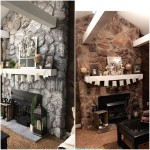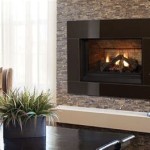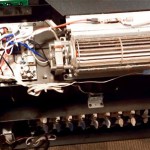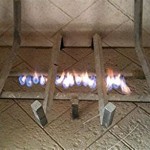Wood Burning To Gas Fireplace Conversion Kit: A Comprehensive Guide
Converting a traditional wood-burning fireplace to a gas fireplace presents a practical solution for homeowners seeking convenience, efficiency, and environmental friendliness. While the allure of a crackling wood fire is undeniable, the labor involved in procuring, storing, and tending to firewood, along with the associated mess and emissions, often outweigh the romantic appeal. A wood burning to gas fireplace conversion kit offers a way to retain the aesthetic charm of a fireplace while simultaneously enjoying the benefits of gas fuel.
These kits provide the necessary components to safely and effectively transform a wood-burning fireplace into a gas-fueled one. This conversion generally involves installing a gas burner within the existing firebox, connecting it to a gas supply line, and implementing safety features to prevent gas leaks and carbon monoxide buildup. Choosing the right conversion kit and ensuring proper installation are paramount to a safe and functional system.
Understanding Conversion Kit Components
A typical wood burning to gas fireplace conversion kit includes several key components. The burner itself is the central element, designed to provide a realistic flame pattern and efficient heat output. Burners come in various styles, including log sets, fire stones, and fire glass, each offering a different aesthetic. The pilot assembly includes a pilot light, thermocouple, and igniter. The pilot light provides a continuous small flame that ignites the main burner when needed. The thermocouple acts as a safety device, shutting off the gas supply if the pilot light goes out. The igniter is used to initially light the pilot flame, usually utilizing a spark or glow plug.
A gas valve controls the flow of gas to the burner, often incorporating a regulator to maintain consistent gas pressure. Control options range from manual valves, where the user turns the gas on and off, to remote-controlled or thermostat-controlled valves for added convenience. A connection kit, which typically includes fittings and flex lines, connects the burner to the gas supply. Safety features form a critical part of the kit. Carbon monoxide detectors are strongly recommended, and some kits include oxygen depletion sensors (ODS) to shut off the gas if oxygen levels in the room become dangerously low. Finally, decorative elements like log sets or fire glass enhance the visual appeal of the gas fireplace.
Key Considerations Before Conversion
Before embarking on a wood burning to gas fireplace conversion, it is crucial to assess several factors. First, confirm that the existing fireplace and chimney are structurally sound and in good working order. A professional inspection is recommended to check for cracks, leaks, or obstructions. The chimney serves as a vital component for venting combustion gases, and any deficiencies must be addressed before installing a gas burner. Next, determine whether to use a vented or ventless gas fireplace system.
Vented systems require a functional chimney to expel combustion byproducts, while ventless systems are designed to burn gas more completely, minimizing emissions into the room. Ventless systems are subject to stricter regulations and may not be permitted in all jurisdictions. The gas supply must be adequate to support the increased gas demand. Assess the size of the existing gas line and consult with a qualified gas technician to ensure it can handle the additional load. Obtain any necessary permits from local building authorities before starting the conversion project. Many jurisdictions require permits for gas line modifications and fireplace installations.
Installation: A Step-by-Step Overview
Installation of a wood burning to gas fireplace conversion kit involves a series of steps that must be performed meticulously. First, prepare the fireplace by thoroughly cleaning out any ash, debris, or creosote. Remove the existing grate and any other non-essential components from the firebox. Then, install the gas line connection. This typically involves tapping into an existing gas line and running a new line to the fireplace. A qualified gas technician should perform this step to ensure proper connections and leak-free performance.
Next, place the burner assembly within the firebox, ensuring it is properly positioned and level. Connect the gas line to the burner, following the manufacturer's instructions carefully. Install the pilot assembly and igniter, ensuring they are properly aligned with the burner. Test the system for gas leaks. Use a soapy water solution to check all connections for bubbles, indicating a leak. Address any leaks immediately by tightening fittings or replacing components. If using a vented system, verify that the chimney damper is properly adjusted to allow for adequate ventilation. Finally, install the decorative log set or fire glass, arranging them according to the manufacturer's recommendations for optimal flame appearance. Once the installation is complete, test the fireplace to ensure it operates safely and efficiently.
Safety Considerations and Maintenance
Safety is paramount when dealing with gas appliances. It is imperative to install a carbon monoxide detector in the vicinity of the fireplace to alert occupants of any potential carbon monoxide leaks. It is crucial to follow the manufacturer's instructions for proper operation and maintenance of the gas fireplace. Schedule regular inspections of the gas fireplace and chimney by a qualified technician to ensure they are functioning safely and efficiently. These inspections should include checking for gas leaks, proper ventilation, and any signs of damage or wear.
Keep the area around the fireplace clear of flammable materials to prevent fire hazards. Do not store firewood, paper, or other combustibles near the fireplace. Properly ventilate the room when using the gas fireplace, especially with ventless systems. This helps to prevent the buildup of carbon monoxide and other harmful gases. Regularly clean the burner and log set to remove dust, soot, and debris. This will help to maintain optimal flame appearance and prevent burner malfunction. If any unusual odors, noises, or malfunctions are detected, immediately shut off the gas supply and contact a qualified technician for assistance.
Can I Convert My Wood Burning Fireplace To Gas Woodlanddirect Com

Can A Wood Burning Fireplace Be Converted To Gas The Flame Company

Want To Convert Gas Wood Fireplace Full Service Chimney

Wood Burner Conversion New Jersey Fireplaces Kjb

Best Gas Fireplace Inserts Fireplaces Direct Learning Center
Can I Convert My Wood Burning Fireplace To Gas Woodlanddirect Com

Want To Convert Gas Wood Fireplace Full Service Chimney

Can You Convert A Gas Fireplace To Wood Burning Stove Direct Stoves Resources

Fireplaces Inserts Wood Gas Fireplace Xtrordinair

Gas Fireplace Insert Vs Wood Burning Installation
Related Posts








